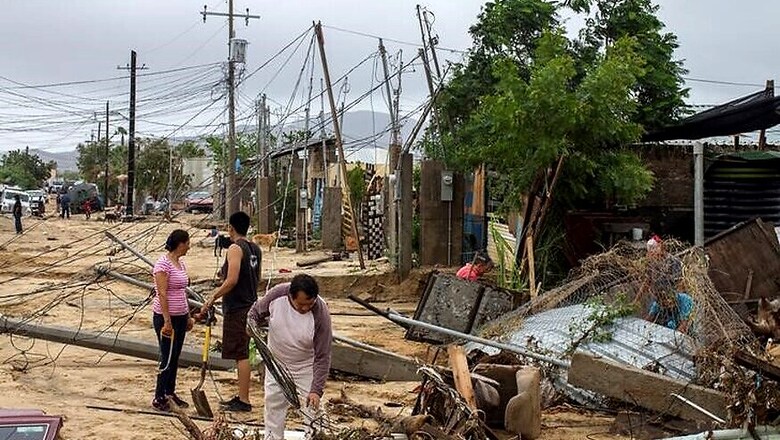
views
Cabo San Lucas: Tropical Storm Lidia marched up Mexico's Baja California Peninsula on Saturday, dumping more heavy rains on a region where it has already flooded streets and homes, stranded tourists and left at least four people dead.
Authorities said the death toll could rise over the weekend as emergency crews surveyed the damage in villages with ramshackle homes. One person was considered missing and video broadcast on local networks showed vehicles being swept away by flooded rivers.
The mayor of the twin resorts of Los Cabos, Arturo de la Rosa Escalante, said yesterday that two people were electrocuted by power lines, a woman drowned after being swept away by water on a flooded street and a baby was ripped from its mother's arms as she crossed a flooded area.
State Tourism Secretary Luis Genero Ruiz said about 20,000 foreign tourists were stranded after airlines suspended flights to the area.
About 1,400 people had sought refuge at storm shelters as the storm flooded streets and stranded tourists. The US National Hurricane Center said Lidia made landfall early Friday west of La Paz, the capital of Baja California Sur state.
Lidia's wind strength had eased to 45 mph (75 kph) on Saturday morning, and further weakening was forecast. The center said Lidia was expected to become a remnant low pressure system by Sunday.
The storm was centered about 70 miles (115 kilometers) east-southeast of Punta Eugenia and was heading northwest at about 12 mph (19 kph).
Lidia earlier spread rains over a broad swath of Mexico including the capital, where it was blamed for flooding that briefly closed the city's airport this week.
The hurricane center forecast that some of the storm's tropical moisture would affect the US desert Southwest over the Labor Day weekend, including parts of western Arizona, southern California and southern Nevada, in the form of scattered showers and thunderstorms.
Far out over the Atlantic, meanwhile, Hurricane Irma was following a course that could bring it near the eastern Caribbean Sea next week. It had maximum sustained winds near 110 mph (175 kph) and was moving west at 14 mph (22 kph). There was no immediate threat to land, and no coastal watches or warnings were in effect.



















Comments
0 comment